They are so ubiquitous in South Africa, people have joked they are the new national flower. In Ireland, when they flap in the wind, stuck on a tree, they are known as ‘witches knickers’. They have been found on polar ice caps, at the summit of Mount Everest, and at the deepest parts of the ocean. Plastic bags are everywhere, and they’re not going anywhere very vast.
In this article, we look at 10 shocking facts about plastic bags.
1. Nobody knows how long they take to decay
Type ‘how long does plastic take to decay’ into Google, and you’ll likely be presented with a pretty definitive answer: 450 years. The truth is, nobody really knows how long it takes for plastic to completely disappear, or for that matter if it ever truly does.
Plastic does not biodegrade. The bacteria that will go to work on organic materials such as vegetables or paper will ignore plastic because the bacteria did not evolve to recognise it as food.
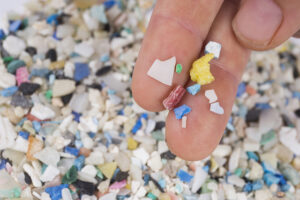
So rather than biodegrade, plastic photodegrades. Which means it begins to break apart when exposed to sunlight. It will begin to break into smaller and smaller pieces. Once these pieces are measured at 5 mm or under, they are classified as ‘microplastics’.
But do these pieces of plastic ever truly disappear?
We asked Imogen Napper, a PhD student at the International Marine Litter Research Unit of Plymouth University, who said:
“Truth be told, no one really knows the timeline for plastic to completely break down to its most basic chemical components. It’s such a new material (the last century) and it had been predicted that all the plastic that has ever been made is still present today (unless it’s been burnt).“
It is a sobering thought that every plastic bag you have ever used is still out there somewhere – perhaps only as tiny pieces – but still in existence nonetheless.
2. Sea turtles have been known to mistake plastic bags for jellyfish
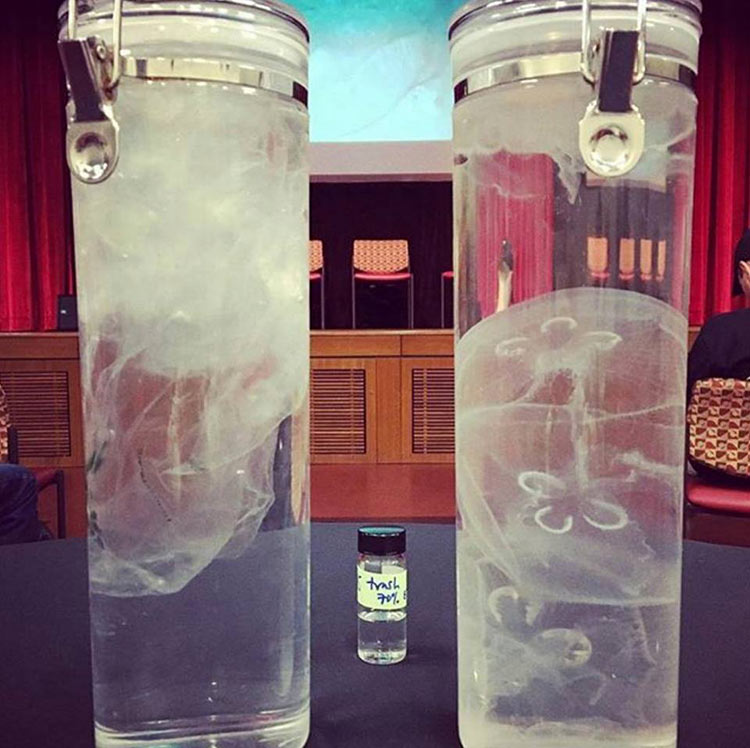
The photograph above shows two beakers of water. In the one on the left is a plastic bag, and on the right is a plastic bag. Similar, aren’t they? Now imagine the plastic bag floating in the dark, murky ocean, and you’ll understand why sea turtles commonly mistake plastic bags for one of their staple food sources, jellyfish.
Researchers in Australia found that just ingesting just 14 pieces of plastic can be fatal for a sea turtle.
The same report estimates that more than half of all sea turtles in the world have eaten plastic debris at least once their lives.
Eating plastic can also make turtles more buoyant, making them less mobile and less able to dive for food.
3. Up to 5 trillion plastic bags are used around the world each year
Around 5 trillion plastic bags are used around the world each year – that’s a staggering 160,000 every second. If we laid them all flat, they would cover an area twice the size of France.
To manufacture this many plastic bags uses roughly 600 million barrels of oil.
The reason why there are so many plastic bags is due to their incredible properties: they’re strong, durable, lightweight and cheap to produce. These incredible properties have resulted in plastic bags being ubiquitous in modern life.
Plastic bags have been found on polar ice caps, at the top of Mount Everest, and at the deepest parts of the world’s oceans.
It is only recently the world has started to wake up to the consequences of having trillions of pieces of plastic littering the planet; plastic that will not disappear for a long long time.
4. 90% of seabirds have ingested plastic
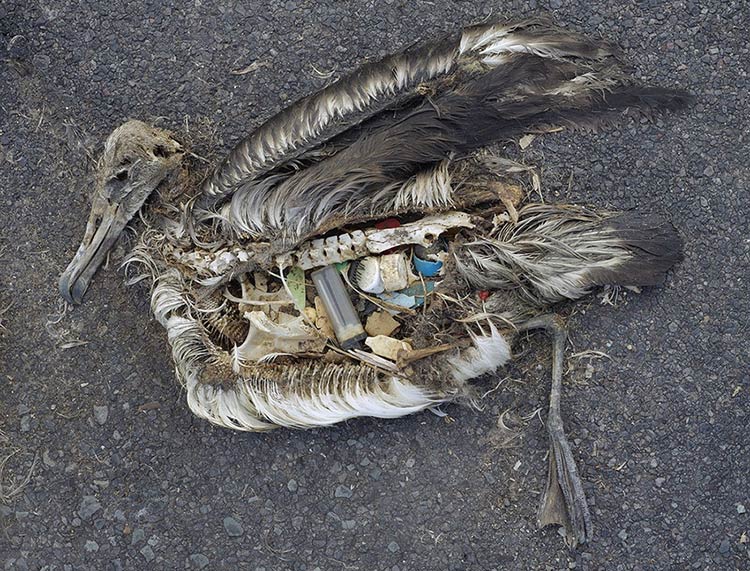
As many as 9 out of 10 seabirds are thought to have plastic in their guts, according to a team of Australian scientists.
Birds can mistake plastic for fish eggs, thinking they have had a proper meal, but instead have only filled themselves up with plastic debris, which can clog up their digestive system and can lead to death.
The Australian researchers found a short-tailed shearwater bird that had ingested a glowstick and three whole balloons.
Some of the other items observed in the guts of birds include plastic bags, bottle caps, model cars and plastic toys.

Using computer simulations, the scientists predict that, due to rising plastic production levels, 99% of seabirds will have ingested plastic by the year 2050.
Plastic can also pose another threat to seabirds: entanglement. Plastic such as fishing gear can wrap itself around the feet or wings of birds, rendering them unable to fly. Without the ability to fly, they lose the ability to feed themselves and become easy prey for predators.
4. The Great Pacific Garbage Patch is three times the size of France
The Great Pacific Garbage Patch is located in the Pacific Ocean, about halfway between Hawaii and California. It is the largest accumulation of plastic debris anywhere in the world.
Because they are so light, plastic bags are often carried long distances by the wind. Many of them end up in the sea, where they will be subject to wind direction and ocean current.
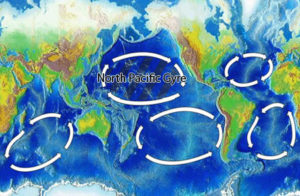
The way in which ocean currents work means that a lot of plastic debris will accumulate in one of the world’s five ocean gyres. The Great Pacific Garbage Patch is the largest of these garbage gyres.
The Great Pacific Garbage Patch contains an estimated 80,000 metric tons of plastic debris, and is made up of roughly 1.8 trillion pieces of plastic.
Once plastic reaches one of the ocean gyres, it is very difficult for it to ever escape, due to the nature of the ocean currents.
5. The average time that a plastic bag is used for is just twelve minutes
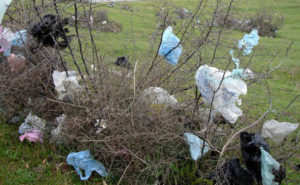
Up until recently, plastic bags were treated as utterly disposable. They would go from a store, to a car, to a house, and then straight into the garbage. It has been estimated that the average time a plastic bag is in use is just 12 minutes.
When you juxtapose this statistic with the fact that plastic bags take centuries (or longer!) to decay, it is not hard to see why they have become such a blight on the world.
If plastic bags were all recycled, or buried in landfill, they wouldn’t be considered such a problem. But the truth is that, due to being so lightweight, they will often escape into the environment and end up in the sea.
6. Only 1 to 3% of plastic bags are recycled worldwide
Almost no curbside recycling programs in the US accept plastic bags. Plastic bags put in curbside recycling bins can often clog the machines found at recycling plants.

Plastic bags are usually made of high-density polyethylene or low-density polyethylene. These types of plastic are unsuitable for recycling at recycling centres, which are designed to handle more ‘solid’ types of plastic, such as plastic bottles and containers.
A general rule when considering what type of plastic can be recycled is that if it can wrap around your finger, it is not suitable for curbside recycling.
Most large grocery stores, home improvement stores, and large retailers such as Wal-Mart and Target provide recycling bins near their entrances, into which plastic bags can be deposited.
Unfortunately, the fact that plastic bags can’t be recycled in curbside recycling bins has meant that only 1% to 3% of plastic bags used worldwide every year are recycled.
This has led to plastic bags being one of the most commonly observed types of litter – hanging from trees, fences, and blowing down streets. All-too-often they will find their way into the sea, where they contribute to the trillions of pieces of plastic already there and pose a danger to marine life.
7. Countries around the world are beginning to phase out the use of plastic bags
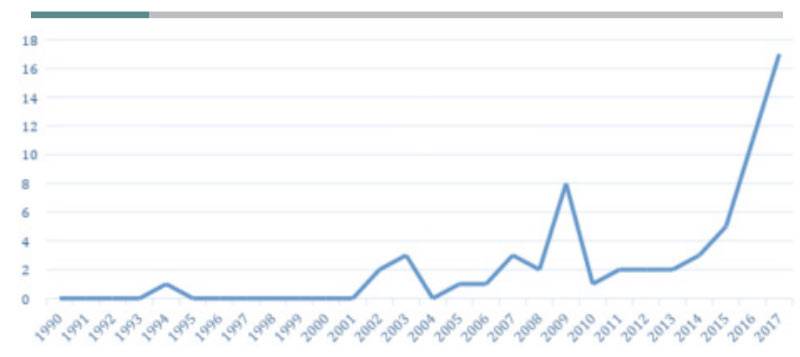
There is now much more public awareness of the environmental dangers of plastic bags. The majority of countries around the world have enacted measures aimed at curbing the amount of plastic bags in circulation. Some of these measures include:
- The promotion of reusable bags as an alternative to plastic bags. This can either be a bag made of a non-plastic material, such as canvas, or the reusing of plastic bags. In many countries, it is now seen as socially unacceptable to use a plastic bag only once.
- Some countries have made it law that an extra charge must be applied if the customer requests a plastic bag. In the UK, there is a 5 pence ($0.07) mandatory charge for plastic bags. Since the introduction of the charge, there has been an 85% reduction in plastic bags being handed out in stores.
- Some parts of the world have taken a more drastic approach, banning plastic bags outright. The Indian city of Mumbai banned the use of plastic bags in June 2018. Anyone caught using a plastic bag can face a fine of 25,000 rupees ($350), and could even be given a three-month jail sentence.
8. Biodegradable plastic bags are a step in the right direction, but they’re far from perfect

Biodegradable plastic is a controversial topic. On the surface, they seem like the perfect solution to the plastic pollution problem, resulting in plastic bags that will decay in a matter of months, as opposed to centuries.
Biodegradable plastic bags are used by large corporations such as Pizza Hut, KFC, News international, Walmart and Marriott hotels.
There are two major criticisms of biodegradable plastic bags: the first is they do not biodegrade as easily as is claimed, and the second is that designing plastic that will disappear is not taking us in the right direction.
Do they actually biodegrade?
For biodegradable plastics to actually biodegrade, they must be exposed to sunlight and oxygen. Which means they will not biodegrade when buried in a landfill, making them no better than non-biodegradable plastic bags.
A scientific study carried out by the Biodegradable Products Institute found that the ability of this type of plastic bag to biodegrade was very much dependent on temperature and humidity. The process will dramatically slow down in cold weather, and high humidity can cause the process to stop altogether.
Oil and energy
The European Plastics Recyclers Association have gone on record to say that biodegradable plastic bags are not the right environmental option.
Their argument is that it takes a lot of oil and energy to manufacture a plastic bag, which is being wasted when the bag biodegrades.
Widespread use of biodegradable bags will still mean millions of tonnes of oil is required to produce them.
Rather than using energy and oil to manufacture something that is designed to self-destruct, a more environmentally sensible choice is to promote the use of reusable bags (such as canvas).
9. At the current rate, plastic in the ocean will outweigh fish by 2050
According to the Ellen Macarthur Foundation, by 2050, the combined weight of plastic in the oceans will outweigh all of the fish.
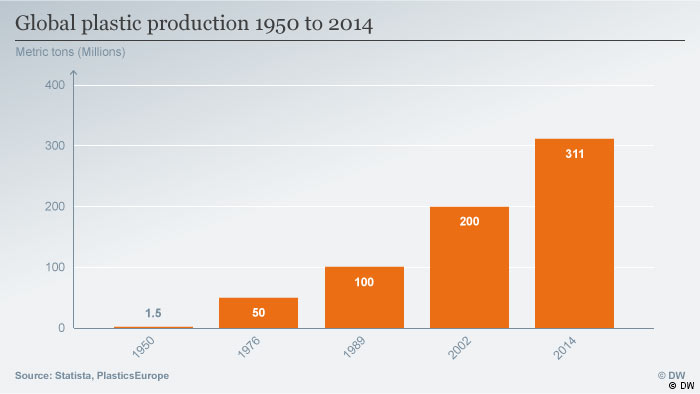
The graph above illustrates the rapid increase in global plastic production. In 1950, there were just 1.5 million tonnes of plastic produced, compared to 311 million tonnes in 2014. And that figure is set to triple by 2050, by which time plastic will account for 20% of global annual oil consumption.
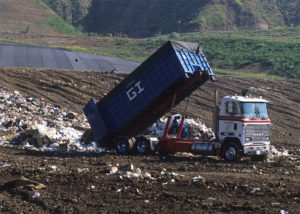
Every year, an estimated 8 million tonnes of plastic enters the ocean. That’s equivalent to one garbage truck full of plastic being dumped into the ocean, every minute. If current trends continue, by 2050, it will be equivalent to 4 garbage trucks being dumped every minute.
If plastic production and plastic consumption carry on as normal, by 2025 there will be 1 tonne of plastic for every 3 tonnes of fish, and by 2050, plastic will outweigh fish.
10. The first country in the world to ban plastic bags was Bangladesh, after it was found they contributed to devastating flooding
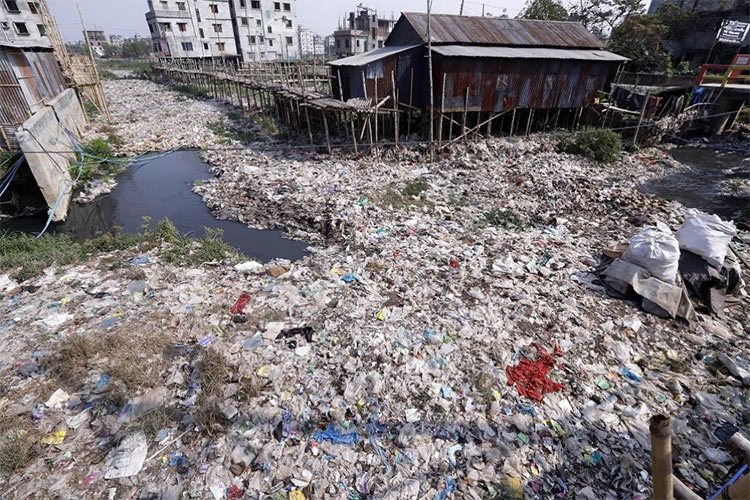
In 2002, floods in Bangladesh killed an estimated 51 people and caused widespread destruction of property and infrastructure.
Investigations found that thousands of plastic bags had clogged city drainage systems, exacerbating the damage caused by the flooding.
In Dhaka, Bangladesh, it was estimated that 9.3 million plastic bags were dumped in the city every day, with only 10-15% being put into garbage bins.
The canals and streams of Dhaka once formed natural drainage channels, but have become so polluted with plastic, particularly plastic bags, that they are unable to effectively carry water away as they once did.
All over the world, in densely populated and developing countries, plastic pollution is causing havoc with local infrastructure.
